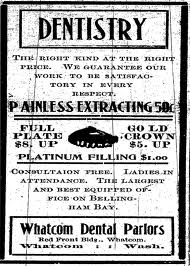If you are like most practices, you have tried different types of dental advertising and it has failed. You shrug it off as a lesson learned, until the next great sounding advertising idea comes along. Once again, you are disappointed with the results.
You ask yourself, why does this keep happening? Is the offer bad? Did I put too much in the ad? Was it the wrong medium? These reasons are valid and may or may not be the cause. It  could be a number of reasons or more likely a combination of several reasons as to why it fails.
could be a number of reasons or more likely a combination of several reasons as to why it fails.
Dental advertising is a lot like going to Las Vegas. Sometimes you get lucky, sometimes you walk away without a penny. That is why it is also best to minimize the odds in your favor. So what can you do? Try these 7 things to improve your chances?
(1) Good advertising always starts with a good strategy. You need to determine who your ideal patient is, to find more like them. You need to differentiate your practice from other like practices to standout. And you need to form a message around your difference that resonates with your ideal patient.
(2) Once you determine your ideal patient, you want to select a medium that reaches them. If your differentiation is “The always on time dentist” you may want to target busy business people who have to get in and out quickly; making a business publication a good choice. There is no need to advertise to everyone; this should save you on ad cost. Also, your ad should be more appealing to the audience, resulting in a better response.
(3) The ad needs to incorporate the following components to attract potential patients: It should have a short impactful message or headline to grab attention and engage interested parties. Some say this is 90% of the cost of the ad. Next, use a large graphic that paints a picture of what problem will be solved if they choose your dental practice.
(4) Keep the message of the ad single focused. All too often, the creator of the ad wants to include everything the practice does to maximize appeal. Often this clutters the message or visual appeal of the ad and renders it ineffective. With a single focus the message can quickly be grasped and action taken.
(5) Typically, ads are limited in the amount of space they have to sell a potential patient. It is best to construct a two-step ad that avoids selling and leads prospects to go to the website to get more information.
This information can be structured to provide value in the form of education about procedures, offers or whitepaper download. Buyers rarely go from awareness about a practice to patient activation. The website gives you the chance to build some like and trust and create a more comfortable patient experience.
(6) Ads should include housekeeping items. This include: Business name, logo, jingle or tag line, address, the entire phone number, web address, email address, hours and credit terms. Some people like to include a sense of urgency, e.g. a limited time offer or while supplies last.
(7) Frequency comes in to play next. An ad needs to run a number of times before it is seen repeatedly to be remembered and to get patients to respond. If an ad runs only one time it has a chance of missing potential patients or reaching them when they didn’t have a need for your services. So frequency is extremely important.
Another good practice is to continue with an ad before changing its content. It takes a number of views or listens before the message sinks in and is acted on. Use frequency of 5 to 7 times as a rule of thumb.
Most advertising is risky; you really need to give your ad the best chance for success. Following the above 7 steps should help. If you would like more tips on dental advertising, go to restarmarketing.com and sign up for our weekly dental marketing tips.



